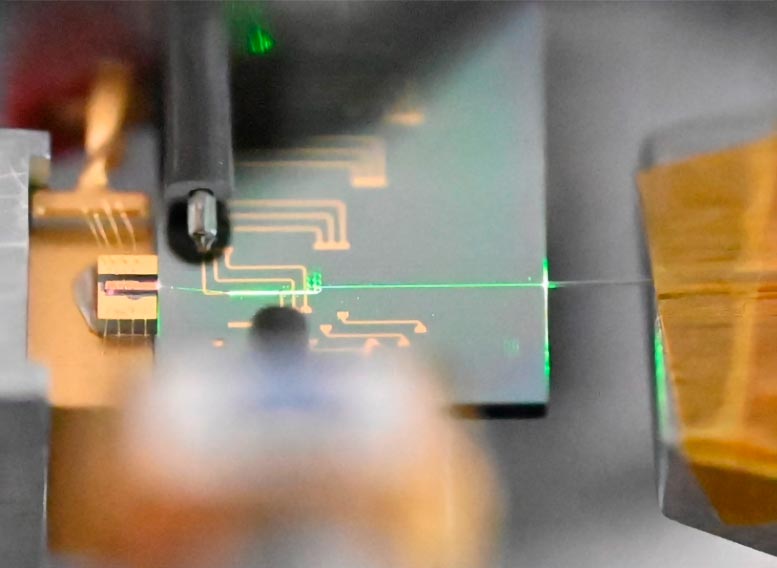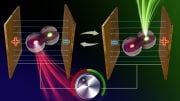
Chip scale, ultrafast mode-locked laser based on nanophotonic lithium niobate. Credit: Alireza Marandi
Researchers have created a compact mode-locked laser integrated into a nanophotonic platform, capable of generating high-power, ultrafast light pulses. This breakthrough in miniaturizing MLL technology could significantly expand the applications of photonics.
Innovations in Mode-Locked Laser Technology
Setting out to improve a technology that typically requires bulky, bench-top equipment, Quishi Guo and colleagues have shrunk a mode-locked laser (MLL) to the size of an optical chip with an integrated nanophotonic platform. The results show promise for developing ultrafast nanophotonic systems for a wide range of applications.
Potential of Miniaturized MLLs
Mode-locked lasers (MLLs) can produce coherent ultrashort pulses of light at extremely fast speeds – on the order of picoseconds and femtoseconds. These devices have enabled numerous technologies in photonics, including extreme nonlinear optics, two-photon microscopy, and optical computing.
However, most MLLs are expensive, power-demanding, and require bulky discrete optical components and equipment. As a result, the use of ultrafast photonic systems has generally been limited to table-top laboratory experiments. What’s more, so-called “integrated” MLLs meant to drive nanophotonic platforms suffer from critical limitations like low peak power and a lack of controllability.
Breakthrough in Nanophotonic MLL Integration
Through hybrid integration of a semiconductor optical amplifier chip with a novel thin-film lithium niobate nanophotonic circuit, Guo et al. created an integrated MLL the size of an optical chip.
According to the authors, the MLL generates ultrashort ~4.8 picosecond optical pulses at around 1065 nanometers with a peak power of ~0.5 Watts – the highest output pulse energy and peak power of any integrated MLLs in nanophotonic platforms.
In addition, the researchers showed that the repetition rate of the integrated MLL can be tuned over ~200 megahertz range, and that the laser’s coherence properties can be precisely controlled, providing a route toward a fully stabilized on-chip nanophotonic frequency comb source.
For more on this breakthrough:
- Ultrafast Laser Technology Miniaturized on Tiny Photonic Chips
- Ultrafast Lasers Shrunk to Fingertip Size
Reference: “Ultrafast mode-locked laser in nanophotonic lithium niobate” by Qiushi Guo, Benjamin K. Gutierrez, Ryoto Sekine, Robert M. Gray, James A. Williams, Luis Ledezma, Luis Costa, Arkadev Roy, Selina Zhou, Mingchen Liu and Alireza Marandi, 9 November 2023, Science.
DOI: 10.1126/science.adj5438









Be the first to comment on "Tiny but Mighty: How a Laser on a Chip Is Changing the Game in Photonics"